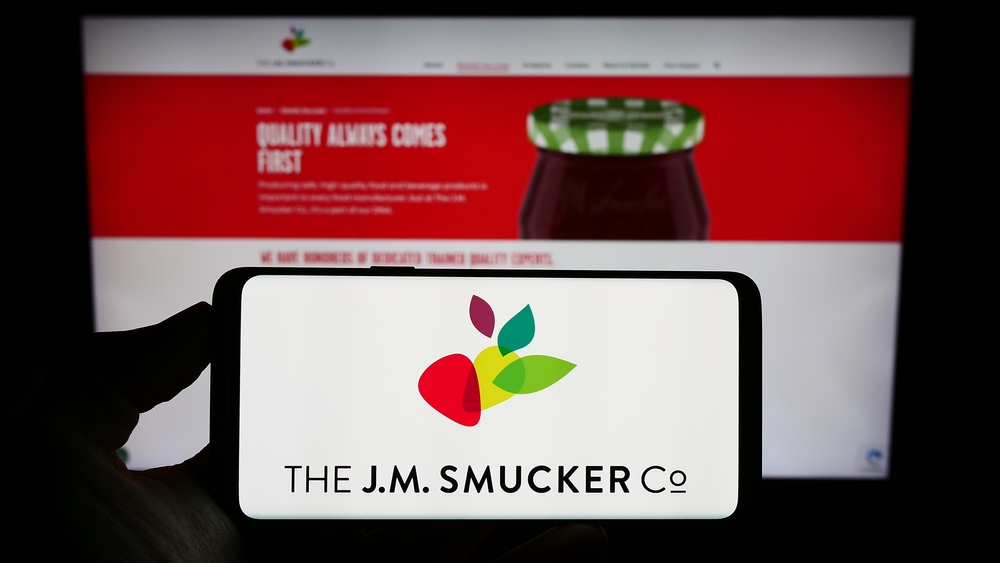|
||
|
Name
Cash Bids
Market Data
News
Ag Commentary
Weather
Resources
|
J.M. Smucker Shares Plunge to 52-Week Low—A Sign of Potential Bargain or Ominous Warning?
There were just four new 52-week lows for NYSE stocks in Tuesday’s trading. One of the names, J.M. Smucker (SJM), hit a 52-week low of $93.93, its 12th low of the past 12 months, before closing slightly higher but down over 16% on the day. At first glance, its long-term chart suggests buying on the dip. However, before doing so, one might consider reasons why now might not be the ideal time. As you can see from the 20-year chart below, Smucker’s share price has fallen below the upward trendline that has formed over the past decade. Source: Barchart.com I’m no technical analyst, but since 2014, it’s set higher highs and lows, which generally portend higher share prices in the future. In Feb. 2014, its low was $86.51. In December 2018, the low was $91.09. In March 2020, it was $92.40. The trendline suggests the new low should be around $97. Yesterday, it was more than $3 below the trendline. The pre-market trading looks like its share price will move slightly higher. The food company’s earnings report and guidance were not good. Unless I’m missing something, there isn’t a catalyst to return it to a 20-year high of $163.07, set in January 2023. Before you buy SJM stock on the dip, consider holding off. Here’s why. The Valuation: Is It a Bargain?Smucker’s 20-year low of $34.09 was set on March 1, 2009, in the middle of the financial crisis. Its enterprise value at the time was 2.0 times its latest 12-month (LTM) sales, according to S&P Global Market Intelligence. Today, it isn’t much different, at 2.28x. However, other metrics suggest that it is cheaper than it has been in a long time. Its share price in March 2009 was 12.09 times its forward 12-month earnings per share (EPS); today, it is 11.30x. Furthermore, its enterprise value was 92.27 times its unlevered free cash flow (UFCF), which represents free cash flow before accounting for payments for debt or interest. Today, it’s slightly less than half that, at 21.87x. Now compare today’s metrics to those from January 2023, when it hit a 20-year high of $163.07.
These metrics strongly suggest that SJM stock is indeed undervalued. This could present a promising opportunity for investors. However, let’s consider its balance sheet for a moment. According to S&P Global Market Intelligence, it has an Altman Z-Score of 1.44. The Altman Z-Score predicts the likelihood of a company going bankrupt in the next 24 months. Anything below 1.81 is considered a sign that a company is distressed. In January 2023, it was 2.68, and in March 2009, it was 1.81. Now, it’s important to note that the score changes with each quarter’s results. If Smucker’s businesses deliver better results in the coming quarters, the score will move higher. The company’s guidance doesn’t appear to be forthcoming. Smucker’s finished fiscal 2025 (April year-end) with $7.61 billion in net debt, a high 76% of its market cap. By comparison, its net debt of $3.28 billion in fiscal 2023 was just 20% of its market cap at the time. Will Smucker’s go bankrupt? I doubt it, but it does suggest that Smucker’s stock is trading at or near a 5-year low for a reason. The Missing CatalystSmucker’s CEO Mark Smucker said this about fiscal 2025 in the company’s Q4 2025 press release: “This year we strengthened our financial position and grew both adjusted earnings per share and free cash flow, while investing in our business, paying down debt, and returning cash to our shareholders through dividends.” He’s not wrong. Smucker’s reduced its net debt by $889 million (10.5%), grew its adjusted EPS by 2%, to $10.12, increased its free cash flow by 27%, to $816.6 million, and paid out $455.4 million in dividends. In 2026, it expects a 3% increase in net sales, with adjusted EPS falling to $9 per share at the midpoint of its guidance, and free cash flow marginally higher at $875 million. It will pay out approximately $464 million for dividends, with an annual payment of $4.36 (two quarters at $1.08 and two at a projected $1.10). While the dividend yield is attractive at 4.6%, it’s only this high because of the 16% drop in its share price over the past year. Only five out of 19 analysts rate SJM a Buy. The good news is that the median target price of $119 is considerably higher than the current trading price. The only real positive from the fourth quarter was a 160-basis-point increase in the U.S. Retail Pet Foods segment’s profit margin to 26.8%, just 180 basis points less than its U.S. Retail Coffee segment, Smucker’s largest by sales, which saw a 300-basis-point reduction in its profit margin in Q4 2025. The company’s goal is to generate $1 billion or more in annual free cash flow in the future. It won't in 2026, and it likely won’t in 2027 either. Based on its projected free cash flow of $875 million in 2026 and an enterprise value of $17.99 billion, it has a free cash flow yield of 4.9%. Anything between 4% and 8% is fair value. Over 8% is where value comes into play. With few catalysts available other than cost-cutting, I don’t see SJM as a good buy at current prices, despite yesterday’s significant drop. There are better buy-on-the-dip options available. SJM, in my opinion, is likely to remain dead money for the rest of 2025. On the date of publication, Will Ashworth did not have (either directly or indirectly) positions in any of the securities mentioned in this article. All information and data in this article is solely for informational purposes. For more information please view the Barchart Disclosure Policy here. |
||||||||||||||||
|
|